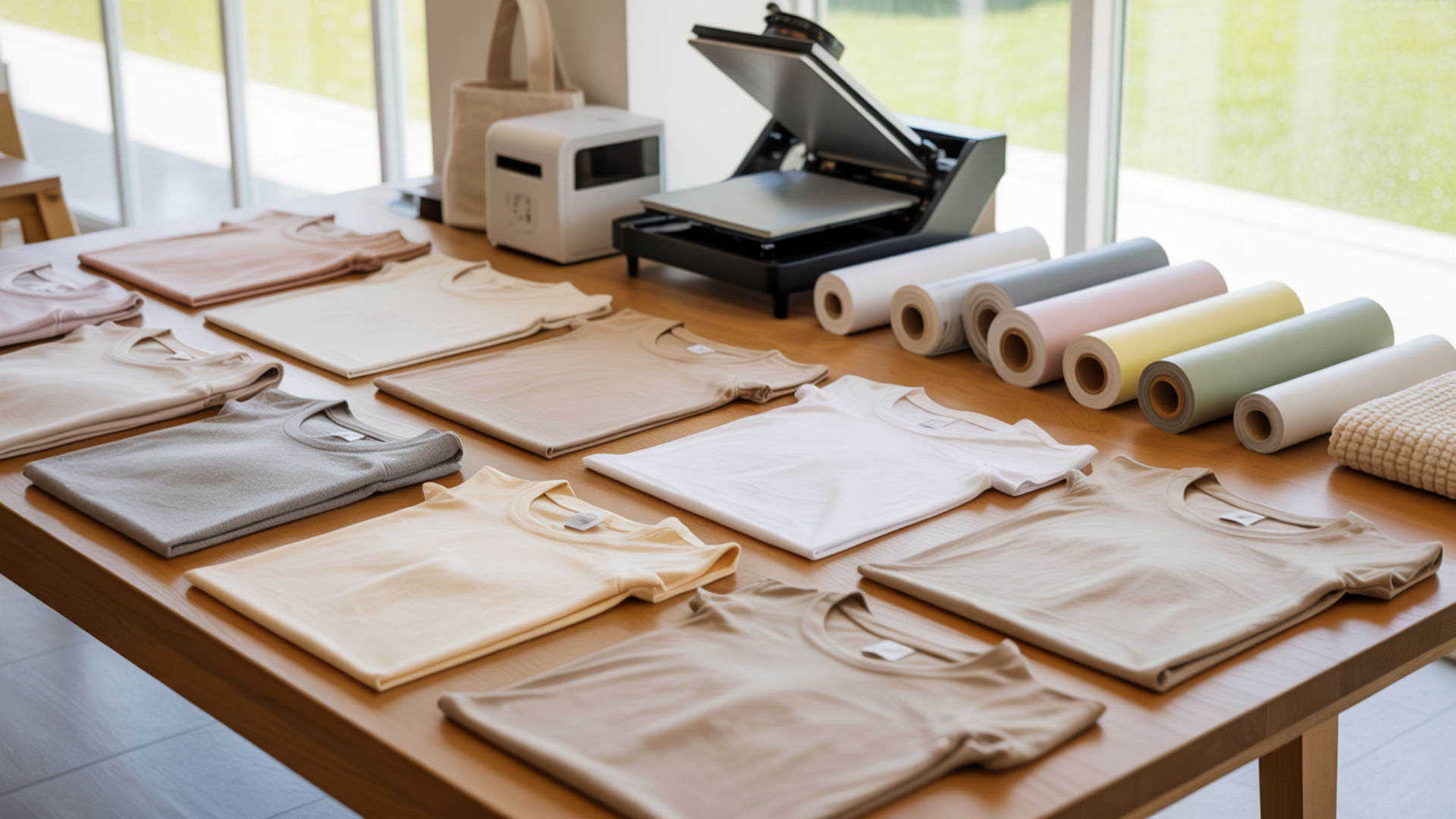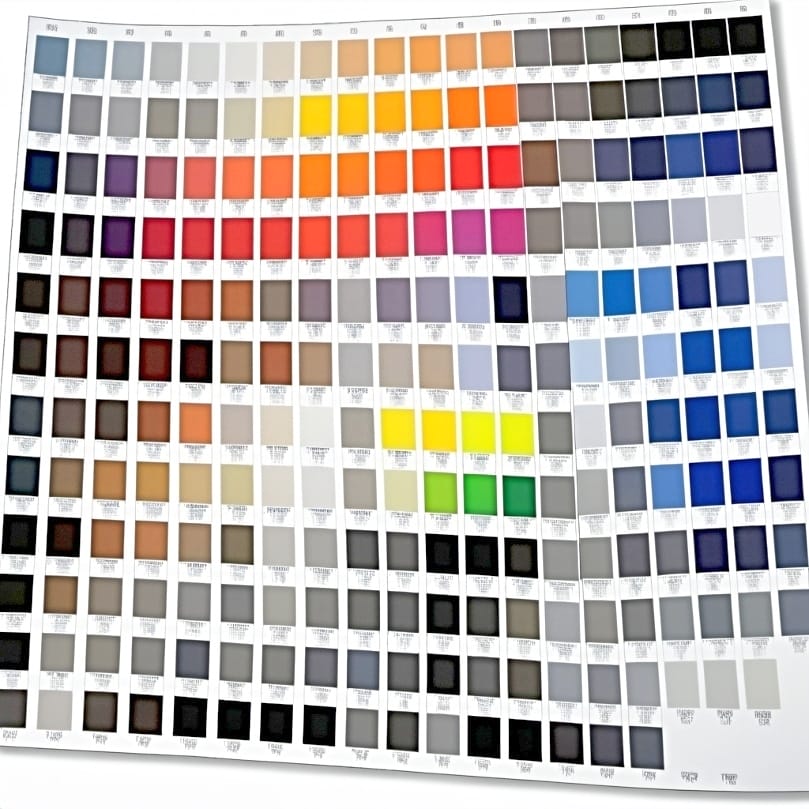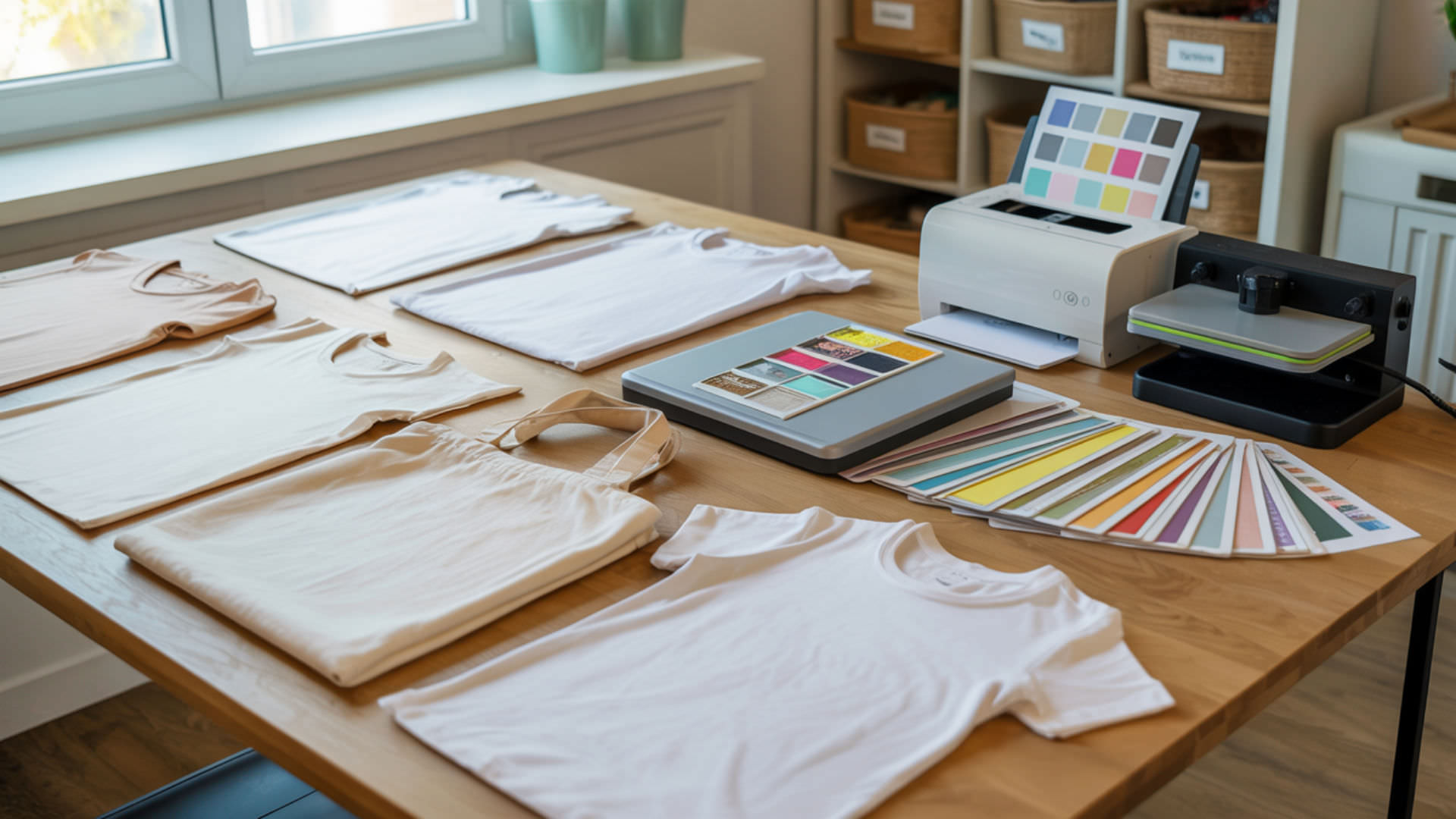Table of Contents
ToggleSublimation and heat transfer vinyl (HTV) represent fundamentally different approaches to garment decoration. Sublimation uses dye diffusion to infuse color permanently within polyester fibers, creating prints with zero texture that become part of the fabric itself. HTV applies a vinyl film layer on top of fabric surfaces, creating a slightly raised texture but working on virtually any material including cotton. Our complete guide on sublimation vs other printing methods explains how dye diffusion distinguishes sublimation from all surface-based decoration techniques.
Key Takeaways
- Sublimation’s phase change converts solid dye to gas at 380–400°F, bonding color permanently within polyester fibers with zero surface texture.
- HTV requires precise heat, pressure, and time—typically 305–320°F for 10–15 seconds—to fuse vinyl onto fabric surfaces.
- Sublimation produces unlimited wash durability on polyester; HTV typically lasts 50–100 wash cycles before potential cracking or peeling.
What exactly is the difference between sublimation and heat transfer vinyl?
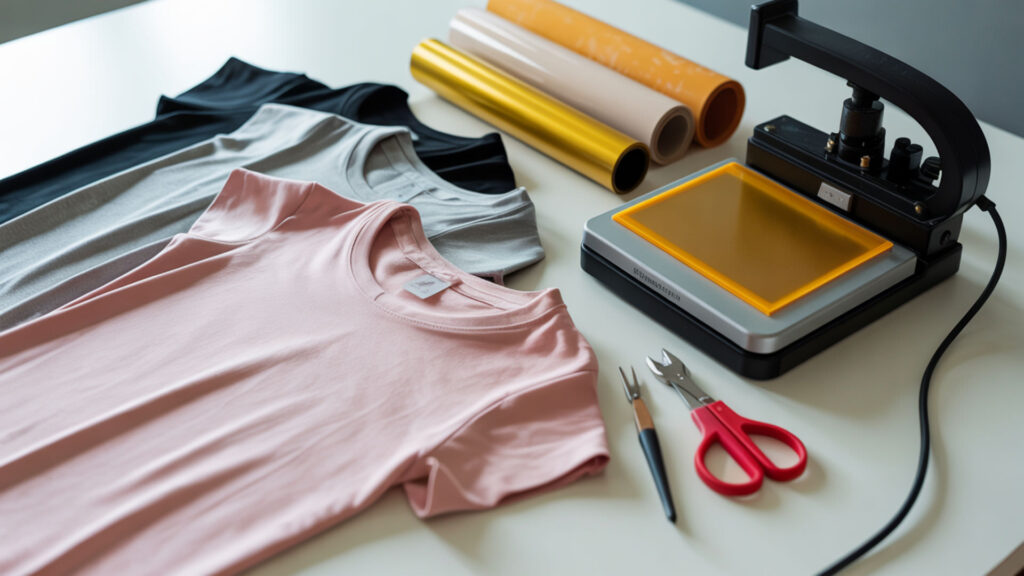
Sublimation uses dye diffusion to create permanent color change within polyester fiber structure—the dye becomes part of the fabric molecule by molecule. Heat transfer vinyl bonds a PU (polyurethane) or PVC film layer to fabric surfaces through thermoplastic fusion. Sublimation produces prints you cannot feel; HTV creates a distinct raised texture. This distinction between ink-free decoration vs dye infusion also applies when comparing sublimation to screen printing methods.
What is the difference between heat transfer vinyl and printable vinyl?
Standard HTV comes in solid colors made from PU (polyurethane) or poly(vinyl chloride) (PVC) that you cut into shapes with a vinyl cutter. Printable HTV has a special inkjet-receptive coating that accepts printed designs before cutting. Both use a polyester carrier sheet for positioning and pressing. PU vinyl offers flexibility and durability; PVC costs less but feels stiffer and cracks more easily over time. Most heat transfer vinyl is made from polyurethane, a flexible polymer designed to soften and bond under heat while remaining durable after cooling.[1]
Is HTV the same as sublimation?
HTV and sublimation are completely different decoration methods. Sublimation prints designs onto sublimation transfer paper using special dye ink, then uses heat to trigger dye diffusion into polyester fibers. HTV involves cutting vinyl shapes and heat-pressing them onto fabric surfaces. Sublimation creates zero texture; HTV adds a distinct film layer. The equipment, materials, and compatible fabrics differ entirely between methods. Sublimation is a true physical phase transition in which a solid converts directly into a gas under heat, whereas heat transfer vinyl relies on softening and bonding a plastic film to the fabric surface. [2]
Can you actually use HTV with sublimation equipment and vice versa?

Both methods use a heat press, but at different temperature ranges. HTV requires lower heat, pressure, and time settings—typically 305–320°F for 10–15 seconds. Sublimation needs 380–400°F for 35–60 seconds. Using sublimation temperatures on standard HTV melts and destroys the vinyl. Our guide on the best printer for T-shirt printing compares heat press requirements and other equipment differences between decoration methods.
Can you put heat transfer vinyl on top of sublimation?
You can layer HTV over sublimated polyester designs successfully. The sublimation creates a permanent base design through dye infusion, while HTV adds solid-color elements or text on top. This ink-free decoration layering works because sublimated areas don’t interfere with vinyl adhesion. Press HTV at its standard temperature (305–320°F) to avoid further affecting the sublimated layer underneath.
⫸ Click Here For Best Selling Sublimation Printers And Products ⫷Can I use sublimation ink on heat transfer vinyl?
Standard HTV cannot accept sublimation ink because it lacks the polymer coating required for dye diffusion. Specialty sublimation-ready HTV (like Siser EasySubli) has a receptive coating that allows sublimation dye to bond during heat pressing. This enables full-color sublimation designs on cotton or dark fabrics by first applying the specialty vinyl, then sublimating onto that layer.
Which printing method lasts longer on shirts and fabrics?

Sublimation outlasts HTV significantly because dye becomes part of the fiber structure permanently. Durability differences stem from the fundamental contrast between ink-free decoration methods: sublimation’s dye infusion versus HTV’s surface-layer adhesion. Sublimation prints never crack, peel, or fade on polyester. Similar durability differences apply when comparing sublimation to DTF printing—see that comparison for adhesive-based transfer longevity.
How long does printable heat transfer vinyl last?
Printable HTV typically lasts 50–100 wash cycles when applied with proper heat, pressure, and time settings—usually 305–320°F for 10–15 seconds with firm pressure. Longevity depends on application quality, vinyl brand, and garment care. Premium printable HTV from brands like Siser or Cricut outlasts budget alternatives. Washing inside-out in cold water and air drying extends print lifespan significantly.
How many washes does heat transfer last?
Quality HTV withstands 50–100+ washes; budget vinyl may show durability differences after just 25–30 cycles. Proper application and care maximize lifespan—incorrect heat settings or aggressive washing accelerate wear. Sublimation on polyester shows no degradation regardless of wash count because dye integrates into fiber structure permanently. HTV remains a surface layer subject to eventual cracking or peeling.
What are the most common problems with heat transfer vinyl and how do you fix them?

HTV problems typically involve weeding difficulties, adhesion failures, or durability differences from expected performance. Weeding errors leave unwanted vinyl pieces or damage fine details. Incorrect heat press settings cause lifting, peeling, or melting. Insufficient pressure creates weak bonds that fail after washing. Most issues stem from temperature miscalibration, inadequate pressure, or incorrect timing during application.
How to seal heat transfer vinyl on shirt?
Seal HTV by applying a final press after the initial application using proper heat, pressure, and time. After peeling the carrier sheet, place parchment paper or a Teflon sheet over the design and press again for 5–10 seconds at 305–320°F. This final press ensures complete vinyl fusion with fabric fibers. Some decorators use specialty sealing products that embed vinyl edges into the fabric for enhanced durability.
Should you wash shirts before applying heat transfer vinyl?
Pre-washing removes sizing chemicals and manufacturing residues that can prevent proper vinyl adhesion on supported fabrics. However, always pre-press the garment for 3–5 seconds regardless of pre-washing to eliminate moisture and wrinkles. Skip fabric softener entirely—it leaves residue that interferes with HTV bonding. Many professionals skip pre-washing and rely solely on pre-pressing for acceptable results.
Which method works better for different shirt materials?

Sublimation requires polyester content of 65%+ for acceptable results—100% polyester produces the most vibrant prints. U.S. HTV works on virtually all supported fabrics including cotton, polyester, blends, canvas, and even leather. For cotton garments, HTV is your only viable option between these methods.
Can you print on white heat transfer vinyl?
You can print on white printable HTV using an inkjet printer—the vinyl has a special coating that accepts ink. Standard white HTV without printable coating cannot be printed on directly. Printable HTV comes on a polyester carrier sheet for easy handling and placement. After printing, cut the design with a vinyl cutter and heat-press it onto the garment like standard HTV.
Can you print on heat transfer vinyl?
Standard HTV cannot be printed on—it’s designed as an ink-free decoration method where solid-color vinyl is cut into shapes. Printable HTV variants accept inkjet printing before cutting. You’ll need printable HTV specifically labeled for inkjet use, an inkjet printer with pigment or dye inks, design software, a cutting machine, and a heat press for application.
Can you remove and reuse heat transfer vinyl after application?
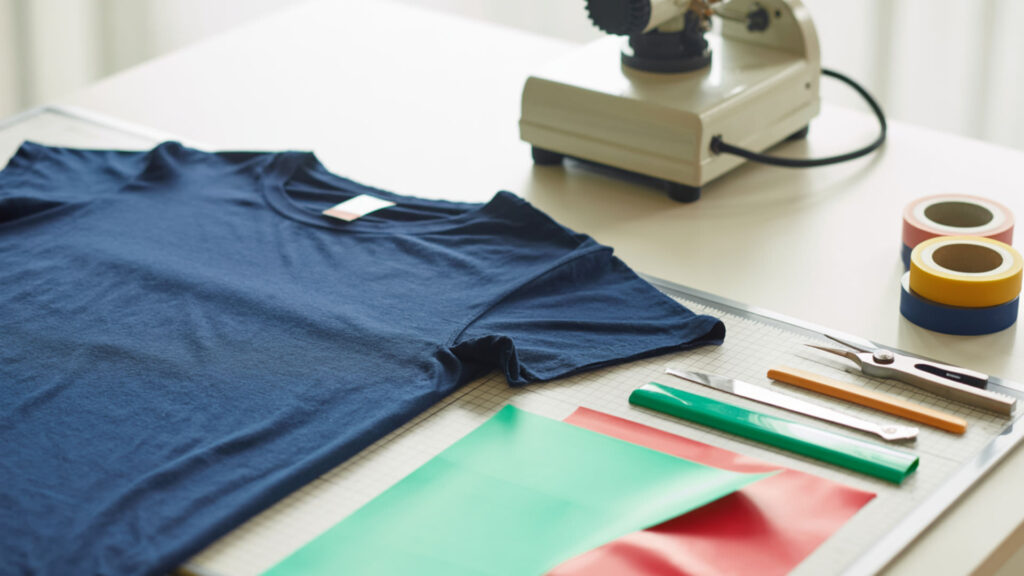
You can remove HTV from garments, but the vinyl cannot be reused after application. Thermoplastic PU (polyurethane) softens when reheated, allowing removal by peeling while warm. However, the adhesive layer bonds permanently during initial pressing. Durability differences between removal methods exist—heat removal works cleanest, while chemical solvents may damage fabric. The garment itself can be redecorated after vinyl removal.
Can heat transfer vinyl go in the dryer?
HTV-decorated garments can go in the dryer on low heat settings, but air drying extends vinyl lifespan significantly. High dryer heat accelerates durability differences by weakening adhesive bonds and causing vinyl to become brittle. Always wash HTV garments inside-out in cold water first. If using a dryer, select the lowest heat setting and remove promptly to prevent excessive heat exposure.
How durable is heat transfer vinyl?
HTV durability ranges from 50–100+ washes depending on vinyl type and application quality. PU (polyurethane) vinyl offers superior flexibility and durability—it stretches with fabric and resists cracking. PVC vinyl costs less but feels stiffer and cracks more readily, especially on stretchy fabrics or after repeated washing. Premium PU brands consistently outperform budget PVC options in long-term wear testing.
How do you apply heat transfer vinyl step-by-step?
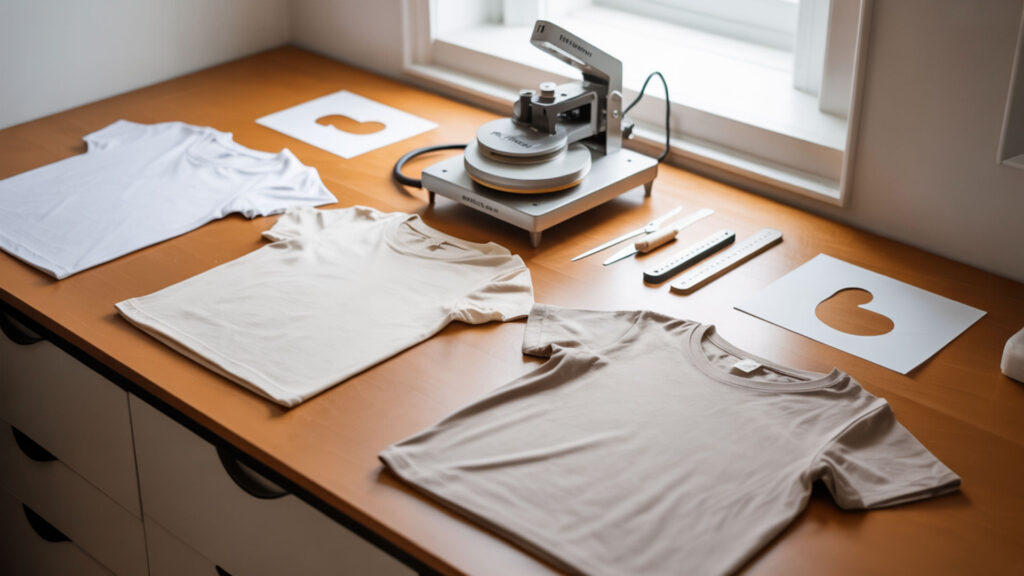
- Create or import your design and mirror the image horizontally in your cutting software. Mirroring ensures correct orientation after pressing; text and asymmetrical designs appear backwards until applied.
- Load HTV into your vinyl cutter with the shiny polyester carrier sheet facing down on the cutting mat. The blade cuts through the vinyl layer only, leaving the carrier sheet intact for handling and positioning.
- Weed the excess vinyl from around and inside your design using a weeding hook or pick tool. Remove all vinyl pieces that shouldn’t transfer to the garment, leaving only your design on the carrier sheet.
- Pre-press the garment for 3–5 seconds using your heat press to remove moisture and wrinkles. This step ensures a smooth, dry surface for optimal vinyl adhesion during the main pressing cycle.
- Position the weeded design carrier-sheet-up on the garment and press at 305–320°F for 10–15 seconds. Apply firm, even pressure throughout the pressing cycle to ensure complete vinyl fusion with fabric fibers.
- Peel the polyester carrier sheet away using hot peel or cold peel technique per vinyl instructions. Hot peel immediately after pressing; cold peel after cooling completely. Check manufacturer recommendations for your specific vinyl.
Ready to choose between sublimation and HTV?
Your choice depends on fabric requirements and design characteristics. Sublimation’s phase change process delivers permanent, photographic-quality prints on polyester with zero texture—ideal for athletic wear, all-over prints, and sublimation blanks. HTV offers fabric versatility for cotton and blends with bold, solid-color designs. Many businesses operate both methods to serve diverse customer needs across different product types.
Frequently Asked Questions
Do I need a heat press for heat transfer vinyl?
A heat press delivers the most consistent, professional HTV results because it provides precise temperature control and even pressure distribution. Household irons can work for small projects but produce less durable results due to inconsistent heat and pressure. A heat press typically costs $200–$500 for entry-level models and pays for itself quickly through reduced failures and professional-quality output.
Is sublimation or HTV better for business?
Each method suits different business models. Sublimation excels at full-color, photographic designs on polyester products—ideal for athletic wear, promotional items, and sublimation blanks. HTV works better for custom names, numbers, small runs, and cotton garments. Sublimation requires sublimation transfer paper and specialized ink; HTV needs cutting equipment. Many successful businesses offer both.
Can you use HTV and sublimation together?
You can combine sublimation and HTV in several ways. Apply sublimation designs first, then add HTV elements on top for text or solid-color accents. Alternatively, use specialty sublimation-ready HTV (like glitter vinyl) that accepts sublimation dye, enabling full-color sublimation on cotton or dark fabrics by first applying the vinyl base layer.
Is heat transfer or sublimation better?
Sublimation produces superior durability—prints never crack, peel, or fade on polyester because dye bonds permanently within fiber structure. HTV offers fabric versatility but remains a surface layer subject to eventual wear. Sublimation wins for polyester products requiring longevity; HTV wins when fabric flexibility matters more than absolute durability.
What is the disadvantage of HTV?
HTV disadvantages include time-consuming weeding for complex designs, visible raised texture on finished garments, and potential cracking or peeling after 50–100 washes. Multi-color designs require separate vinyl layers, increasing production time. The vinyl texture differs noticeably from sublimation’s zero-feel prints. Heat press equipment is essential for professional results.
References
- Polyurethane | Foam, synthesis, plastics | Britannica. (2025, November 27). Encyclopedia Britannica. https://www.britannica.com/science/polyurethane
- Sublimation (phase transition). (2025, November 6). Wikipedia, the free encyclopedia. Retrieved December 30, 2025, from https://en.wikipedia.org/wiki/Sublimation_(phase_transition)?utm_source=ch

